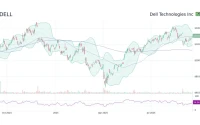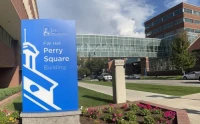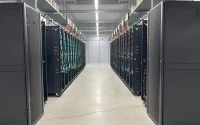So, the Los Angeles Department of Water and Power is giving away free solar panels.
Let that sink in. The same people who send you those famously indecipherable bills, the ones who can’t seem to keep the power on during a mild heatwave, are now playing Santa Claus with high-tech energy gear. They’ve got $32 million in state money to sprinkle across low-income households, promising to cover 100% of the cost for solar panels and a battery backup.
Sounds great, right? A gift horse for the city’s most vulnerable. But I’ve been doing this long enough to know that when a government agency shows up with a gift horse, you don’t just look it in the mouth—you check it for hidden cameras, tracking devices, and a ridiculously complicated maintenance contract.
This isn’t about charity. Let’s be real. This is a panic move.
For years, California has been on a solar bender, slapping panels on every available rooftop like they were going out of style. And LADWP cheered it on. The problem is, they were like a kid who eats all his Halloween candy in one hour. They gorged on daytime solar power without any thought for what happens after sunset. Now, every single evening, the grid teeters on the edge of what LADWP’s own guy, David Jacot, calls the “solar cliff.” That’s a cute corporate term for “the moment our brilliant green energy plan falls flat on its face.”
The entire state-of-the-art grid, it turns out, is like a caffeine addict. It’s buzzing and jittery from a thousand sun-powered espressos all day, but the second the sun dips below the horizon, it crashes. Hard. The lights flicker. The AC strains. And everyone is suddenly plunged back into the 20th century. So, what’s their grand solution? Not building more robust, centralized infrastructure. Offcourse not. Their solution is to turn a few hundred low-income homes into a decentralized network of tiny, Band-Aid power stations.
That ain't charity; that's crisis management disguised as social justice.

This whole thing is a classic government handout. No, ‘handout’ is too simple—this is a calculated shell game. The city isn’t just giving away panels; it’s funneling $32 million through a list of “approved solar developers.” Who are these lucky contractors? How did they get on this magical list? And what’s stopping them from billing the state $50,000 for a $45,000 system, knowing the taxpayer is picking up the tab and the homeowner has no reason to question the price? You’re telling me there’s no room for grift here? Give me a break.
And let’s talk about the scale of this "solution." Thirty-two million dollars. In a city where a parking spot can cost more than a car. At an average cost of $45,000 per home for a solar and battery setup, that money covers… carry the one… about 711 houses. In a city of nearly four million people. This isn’t a program; it’s a pilot. A rounding error. A PR campaign designed to generate feel-good headlines like "LADWP helps the poor!" while the systemic problems fester. It’s like trying to fix the 405 with a single can of Fix-a-Flat.
It reminds me of the time I tried to get a city permit to fix a cracked pipe in my driveway. The paperwork alone could have insulated a small home. I can just picture it now: a family in Boyle Heights, trying to navigate the labyrinth of forms and contractor schedules, all while the developer is dragging their feet because they’ve got bigger fish to fry. They're framing this as a gift, a benevolent gesture from the city to its most vulnerable, but really...
And here’s the kicker. The most revealing, darkly hilarious part of this whole story. Despite LADWP being exempt from the state’s recent cuts to solar incentives, the fact sheet admits that rooftop solar adoption in Los Angeles has declined substantially in recent years. Read that again. Even with better payback rates than their neighbors, Angelenos are backing away from rooftop solar. So what does that tell you? It suggests the problem isn't just the price tag. Maybe, just maybe, people are tired of the hassle, the unreliable contractors, and the feeling that they’re beta-testing a half-baked energy future for a utility that can’t keep its own house in order.
Okay, maybe I’m being too cynical. A few hundred families will get a break on their electricity bills, and in a city this expensive, that’s not nothing. It’s real money in their pockets. But celebrating this feels like cheering for the guy who gives a homeless person a five-dollar bill right after voting to slash funding for shelters. It’s a nice gesture that completely ignores the scale of the crisis. It’s a distraction.
The real story isn’t the $32 million giveaway. It’s the $330 million contract LADWP handed to a consulting firm called Willdan to manage its commercial energy efficiency programs. That’s where the big money is. That’s where the real priorities lie. This little residential program is just the bread and circuses to keep the public quiet while the real game is played elsewhere. So when the money for these 700-odd homes runs out, what then? Is the solar cliff magically gone? Or will we just be left with a few dozen glowing case studies and the same old, fragile grid?
It's a rounding error posing as a revolution.
Look, I’m not against solar power or helping people save money. But let’s call this what it is: a tiny, photogenic patch on a gaping wound. LADWP is using a handful of low-income families as human shields to protect their grid from their own lack of foresight. It’s a desperate, underfunded attempt to decentralize a problem they should have solved centrally, years ago. This program won’t fix the grid. It won’t make a meaningful dent in poverty. It will, however, make for a great press release and keep a few solar installation companies very happy. And in Los Angeles, I guess that’s what counts as a win.
Reference article source:









